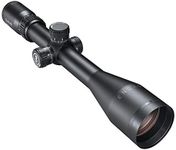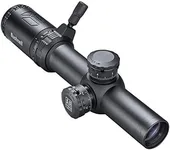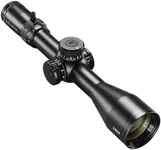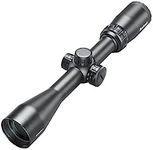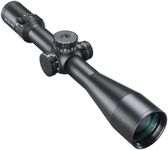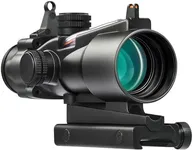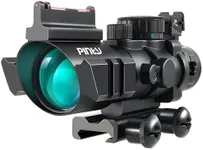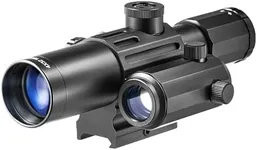Buying Guide for the Best Bushnell Rifle Scopes
Choosing the right rifle scope can significantly enhance your shooting experience, whether you're hunting, target shooting, or engaging in competitive shooting. The key to selecting the best rifle scope is understanding the various specifications and how they align with your specific needs and preferences. Here are some essential specs to consider when picking a Bushnell rifle scope.MagnificationMagnification refers to how much closer the target appears through the scope compared to the naked eye. This is important because it determines how well you can see your target at different distances. Scopes with lower magnification (1-4x) are ideal for close-range shooting and fast target acquisition, while medium magnification (5-9x) is suitable for mid-range shooting. High magnification (10x and above) is best for long-range shooting where precision is crucial. Choose the magnification based on the typical distance you will be shooting.
Objective Lens DiameterThe objective lens diameter is the size of the front lens of the scope, measured in millimeters. This spec is important because it affects the amount of light that enters the scope, impacting the brightness and clarity of the image. Larger diameters (40mm and above) allow more light, making them better for low-light conditions but also heavier and bulkier. Smaller diameters (below 40mm) are lighter and more compact but may not perform as well in dim lighting. Consider where and when you will be using the scope to determine the right objective lens size.
ReticleThe reticle, or crosshair, is the aiming point you see when looking through the scope. Different reticle designs serve various purposes. Simple crosshairs are great for general use, while more complex reticles with hash marks or dots can help with range estimation and bullet drop compensation. Illuminated reticles are beneficial in low-light conditions. Choose a reticle that matches your shooting style and the type of shooting you plan to do.
Field of ViewField of view (FOV) is the width of the area you can see through the scope at a specific distance, usually measured in feet at 100 yards. A wider FOV allows you to see more of the surrounding area, which is useful for tracking moving targets and situational awareness. Scopes with higher magnification typically have a narrower FOV. If you need to track fast-moving targets or require a broader view, opt for a scope with a wider FOV.
Eye ReliefEye relief is the distance between your eye and the scope's eyepiece where you can see the full image. This is crucial for comfort and safety, especially with high-recoil rifles. Longer eye relief (3.5 inches and above) is better for heavy-recoil firearms to prevent the scope from hitting your eye. Shorter eye relief (below 3.5 inches) can be acceptable for low-recoil rifles. Consider the type of rifle you are using and your comfort level when choosing the eye relief.
Parallax AdjustmentParallax adjustment helps to ensure that the reticle remains on target even if your eye position shifts slightly. This is important for precision shooting at longer distances. Scopes without parallax adjustment are typically set for a specific distance (usually 100 yards), which is fine for general use. However, if you plan to shoot at varying distances, a scope with adjustable parallax will provide greater accuracy. Determine if you need this feature based on your shooting distances and precision requirements.
Durability and Weather ResistanceDurability and weather resistance are critical for ensuring your scope can withstand harsh conditions and rough handling. Look for scopes that are waterproof, fog-proof, and shockproof. These features are essential for maintaining performance in various weather conditions and ensuring the scope's longevity. If you plan to use your rifle in challenging environments, prioritize scopes with robust construction and weather-resistant features.
